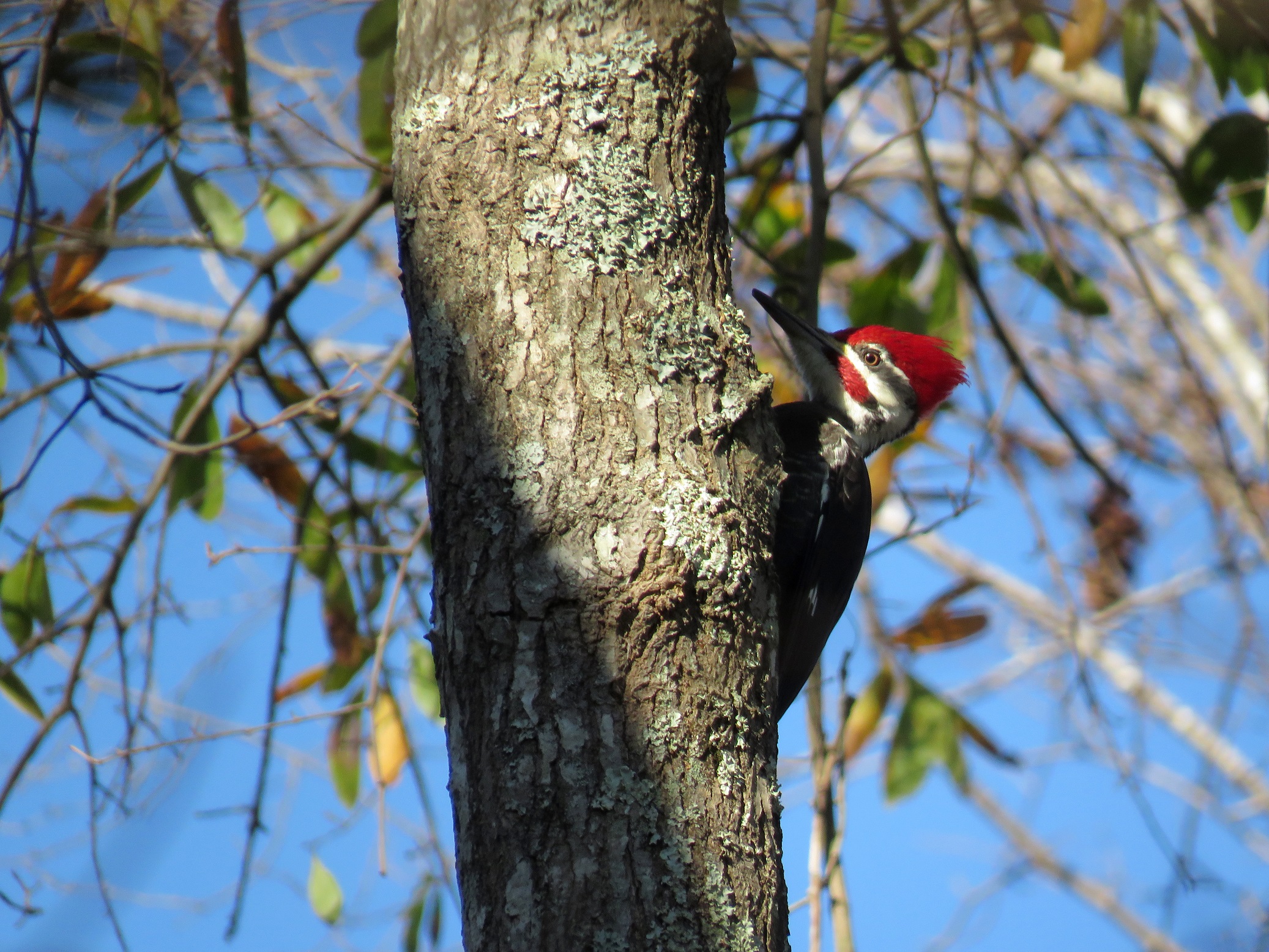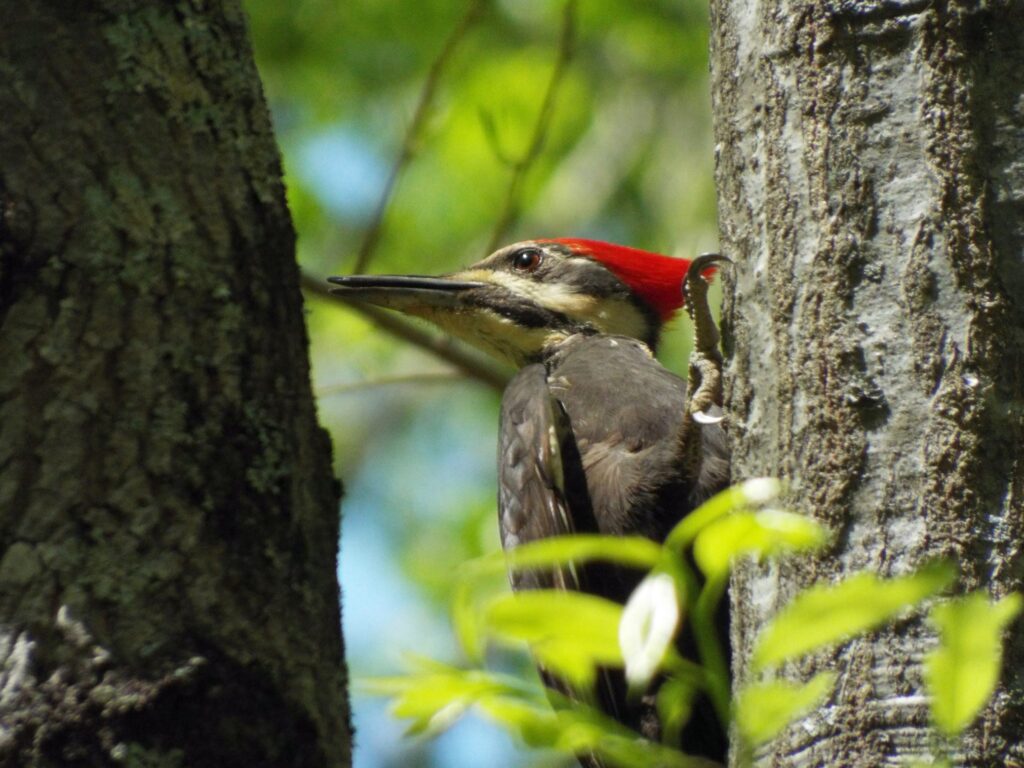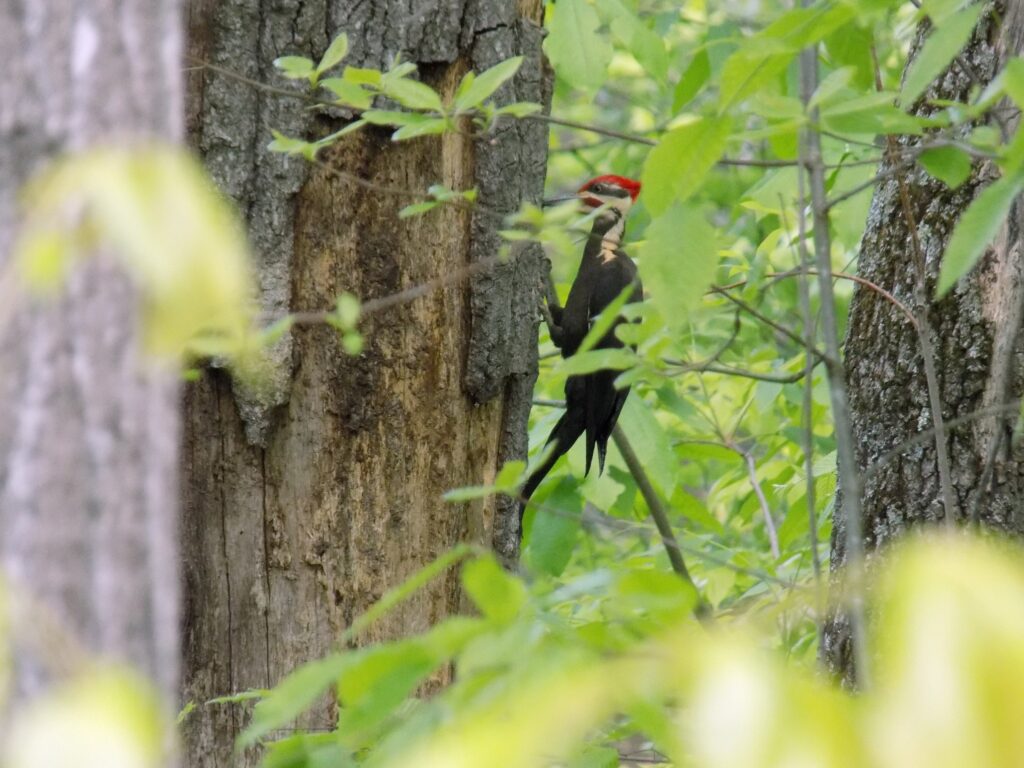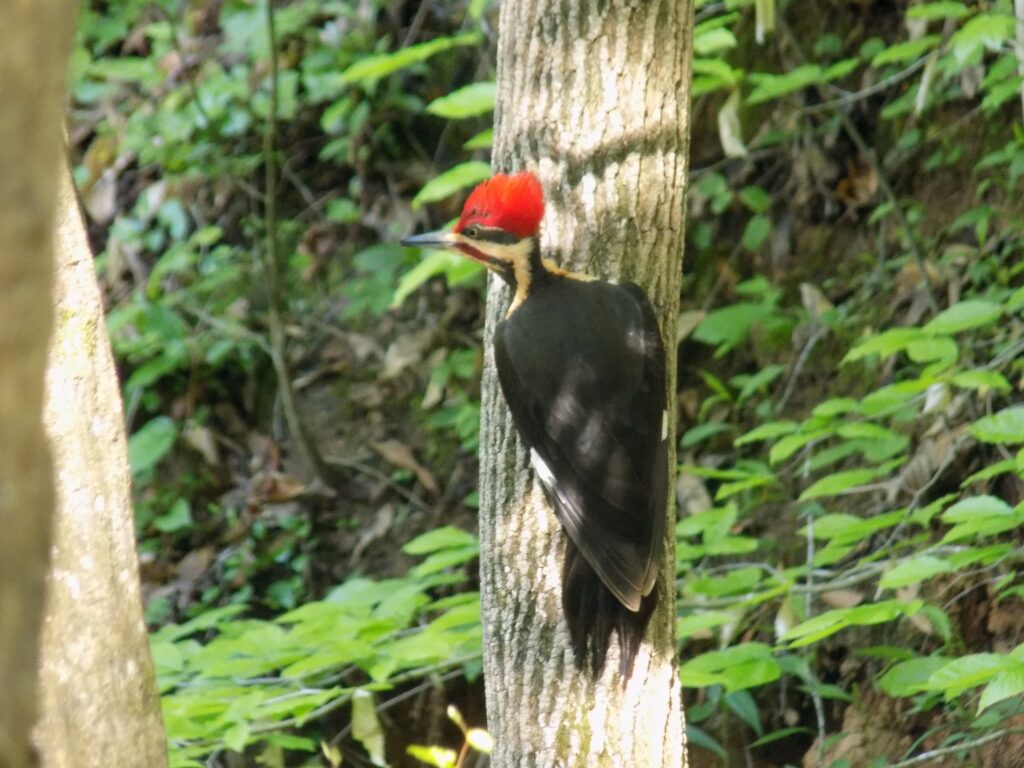



This week for Flora and Fauna Friday, we have the herald of eastern old growth forests, the Pileated Woodpecker (Dryocopus pileatus).
The Pileated Woodpecker is our largest species of Woodpecker and on average is 18 inches from tail to beak. Their call is an echoing string of frantic clucks, often issued in flight while moving between perches. Males will drum on hollow trees to mark their territory. He hammers his bill against a trunk dozens of times a second to proclaim his domain. The term pileated means capped and refers to the species’ slicked-back scarlet cowlick. Their faces and necks are marked with alternating bands of black and white. Males sport a bright red “moustache” as well. Pileated Woodpeckers wear a matte black coat-tailed jacket of feathers across the body. These “coat-tails” are specialized stiffened tail feathers that act as a kickstand, allowing Woodpeckers to lean against them while climbing. Woodpeckers, along with Parrots, have zygodactylous feet. This means both of their outside toes point backwards, providing a more stable grasp while climbing or gripping.
Pileated Woodpeckers feed on insects that live in dead wood, particularly beetle and ant larvae. They have a habit of excavating huge rectangular cavities in rotten snags as they search for snacks. Unlike other woodpeckers, they can often be seen feeding close to the bases of trees and along fallen logs. They will also eat fruits and nuts when available. Pileated Woodpeckers require old growth forest habitats. They need a constant supply of large dead trees to hunt for insects in and to build nests in. Like other Woodpeckers, Pileated Woodpeckers are cavity nesters. They create deep holes in the hearts of snags and, being large, require large trees. These cavities can remain for decades and, after nesting ends, the cavities are used extensively by Squirrels, Rat Snakes, and Raccoons. They are especially critical nesting habitat for Wood Ducks. It’s important to protect these mature forests to preserve critical habitat for some of our larger and more specialized wildlife. The Ivory-billed Woodpecker, an even larger and more habitat specific Woodpecker, was once found extensively through the ancient old growth forests of the South. Due to unchecked logging across its range, the species was driven to extinction by the 1950s.